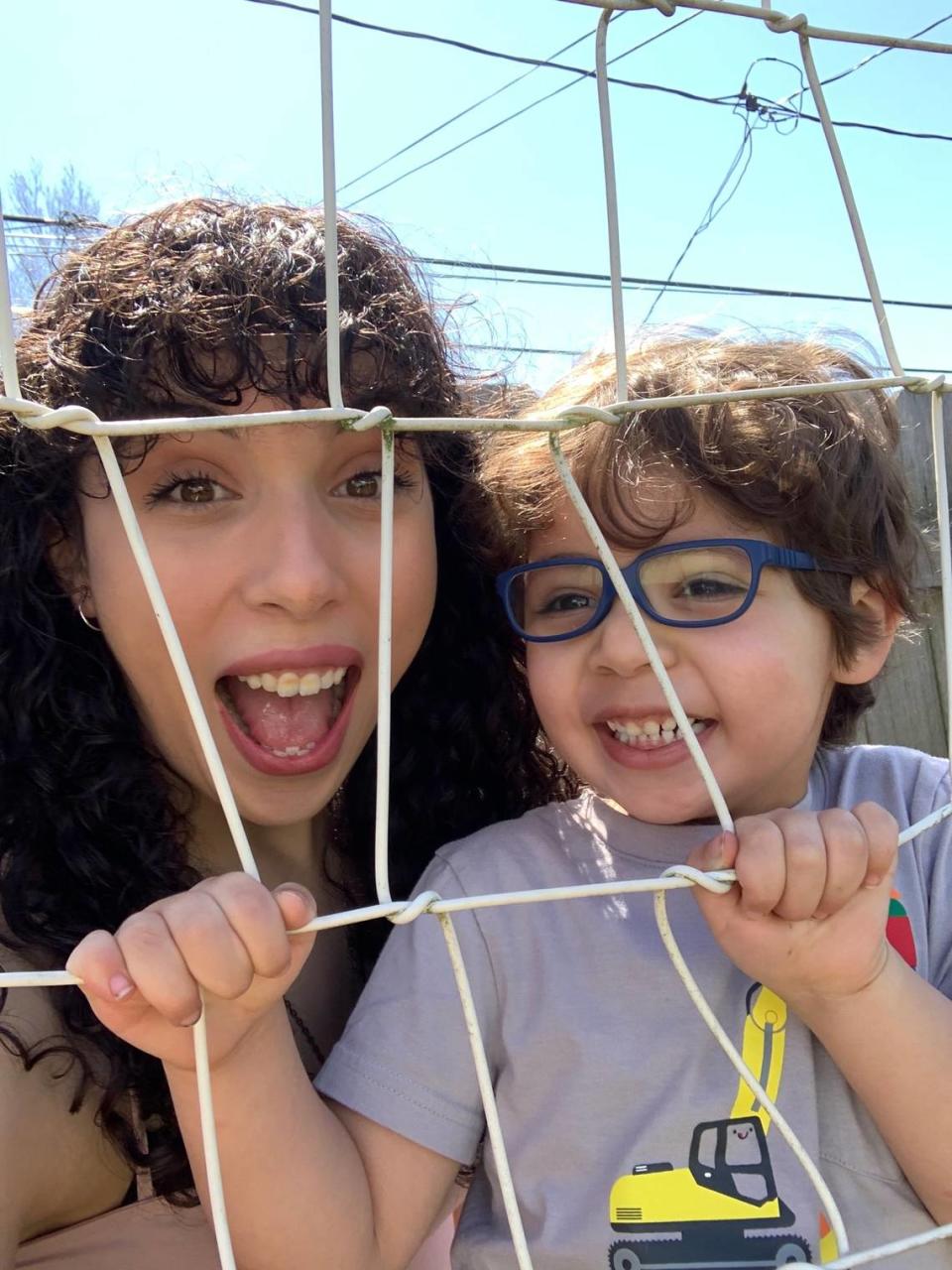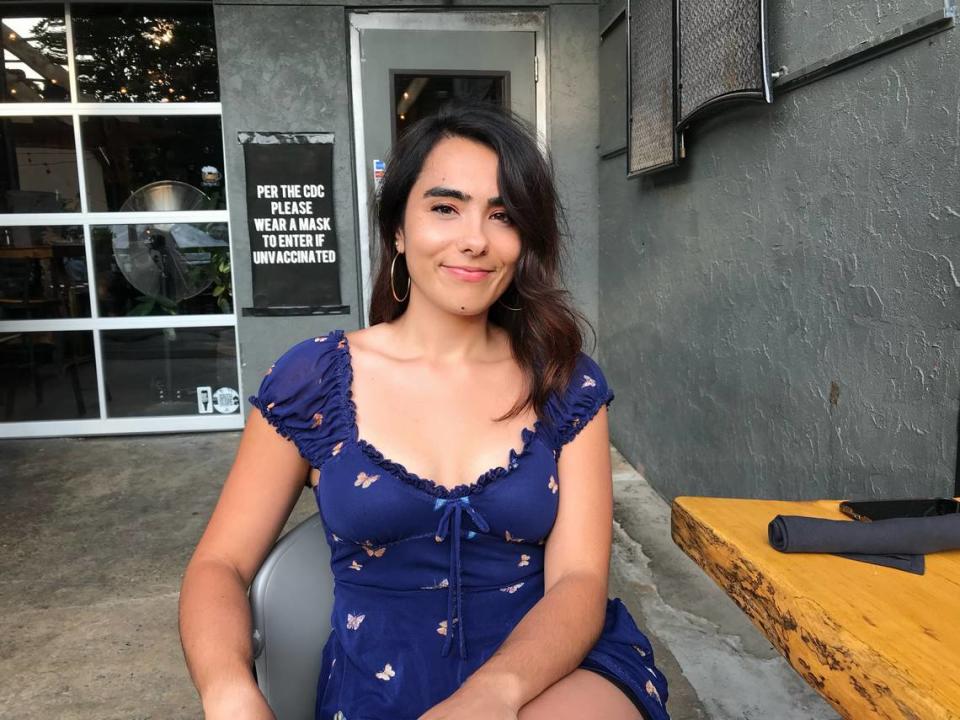‘The sickness’: How parents, educators and siblings talk to children about COVID-19
Laurian Lane’s children went to school on a normal Friday in March. She then had to explain to them why they wouldn’t be going back.
Like Lane, in March 2020, other parents, siblings and educators had to explain to children why they’d be staying home for a while — and not going to the playground.
Lane, 35, is a stay-at-home mother of three girls in Apex. Her children were 7, 4 and 2 at the height of the COVID-19 pandemic.
“We told my oldest [Julianna], who’s the only one who really understood what was happening, that it was a sickness,” Lane explained, “and that we all just had to stay home and make sure that we didn’t get the sickness.”
Jolie Mason, 20, had to explain this new and spreading sickness to her younger brother when she returned home from Duke University for a spring break that would soon be extended.
“We had to explain (that) ‘Jolie’s home because there’s this sickness. And COVID is very different, and there’s a lot of different types of sicknesses; people can have a cold, or people can go to the hospital. And there’s a lot of different ways that we can treat people who are sick; you can get a shot, you can take medicine or you can wait for it to go away by itself. But COVID is a new sickness and we don’t know how to make it better yet,’” Mason said. ‘“To be safe, we just have to stay at home and away from other people so that we don’t get sick.’”
Mason said she and her family tried not to sound “too fatalistic” in their explanation, as James was very young. As he grew and learned to talk more, Mason recalled how he always said, “I can’t wait for the sickness to be over.”
Julianna also asks her mother, Laurian Lane, if they can do various activities “when the sickness is over.”
“I tell her, ‘we’ll get there,’” Lane said.
While Mason and her family never went too in depth explaining the disease itself, she said James eventually became “a little bit obsessed” with the virus. He would ask their mother to show him pictures of the coronavirus and would even draw pictures of it sometimes.
“It was kind of freaky, honestly,” Mason recalled.
When Miranda Rain Wenhold, 27, lived in Philadelphia, she was a school counselor at an elementary school and middle school while she finished studying at the University of Pennsylvania. Now living in Raleigh, she said they focused on “lighthearted” ways to communicate COVID-19 to students, like informational videos, animations and using characters or movies that they recognized.
For her first graders, she compiled a video that included clips from “The Incredibles.”
“They were talking about strengths but how we also have areas of weakness. We just used that as a way to explain what was going on in the world,” she said.
Wenhold and teachers brought in the nurses to explain basics to students: “You understand how you get sick, you understand we have rules about washing your hands before lunch. This sickness is something that can get you a lot sicker than you might have been before, so you have to be careful.”
While she used connections to media and their existing knowledge about illness for the young children, it was much different explaining COVID-19 to middle schoolers, who had a much stronger fundamental understanding of how sickness works.
“It was more about helping them understand that they can’t be hanging out with their friends, particularly in the beginning,” she said.

After the excitement
Like James Mason, a lot of Wenhold’s students were originally very excited when they received time off from school in March.
“There was this really strange period of excitement and intrigue at first, like, ‘Wow, we have a week off of school and my assignments aren’t due right away, this is really cool,’” she said. Wenhold said their reactions were “almost like a giddy, holiday-time excitement.”
But soon, the attitude shifted to what Wenhold described as almost bereavement — a period of sadness as the children grieved the loss of people and normalcy without any preparation or warning.
“We had to help them understand that what they were feeling was grief,” she said. “We then worked them through the modality of identifying it, accepting it, understanding it and realizing that it’s a reality we have to live with.”
Fighting fear
Lane and Mason recalled Julianna and James never being too scared of the pandemic.
Mason said James was more scared about not being able to go back to daycare.
“There was this general sadness that there was a thing keeping him from [going back to daycare],” she said. “But he never panicked or anything like that. He was more just excited to talk our ears off while we were trying to do schoolwork.”
Julianna felt reassured because Lane and her husband explained that the sickness wouldn’t hurt her. She was more concerned about not spreading the disease to other grownups, such as Lane’s father, who has heart and lung conditions.
“We kind of told her, ‘It’s not going to hurt you or kids right now, but it could possibly hurt grownups, and we don’t want to hurt the grownups,’” Lane said. “She can get scared about things easily, but thankfully, she wasn’t too scared.”

‘I don’t know’
James loves to ask why.
“Can we go do this right now?”
“No.”
“Why?”
“Because of COVID-19.”
“Why?”
“Because we could get sick if this happens.”
“Why?”
“And then it’s a rabbit hole of explaining how bacterias pass from person to person and how illnesses travel around the body,” Mason said.
Sometimes, James would ask when. “When can I see grandma? When can I go back to school?”
And Mason would have to give the answer no child wants to hear: “I don’t know.”
Wenhold felt that the hardest part of communicating COVID-19 to children was not having answers.
“I think children are marked by their imagination, but they really look to adults for concreteness,” she said.
She said fear is amplified in some children if adults are uncertain or unable to help them understand what’s happening. When her students kept pushing for information that she just couldn’t give them at the start of the pandemic, it was “upsetting for everyone involved.”
“I think the challenge for everybody was really getting comfortable with just being uncertain. And just living in that gray space together,” she said.

